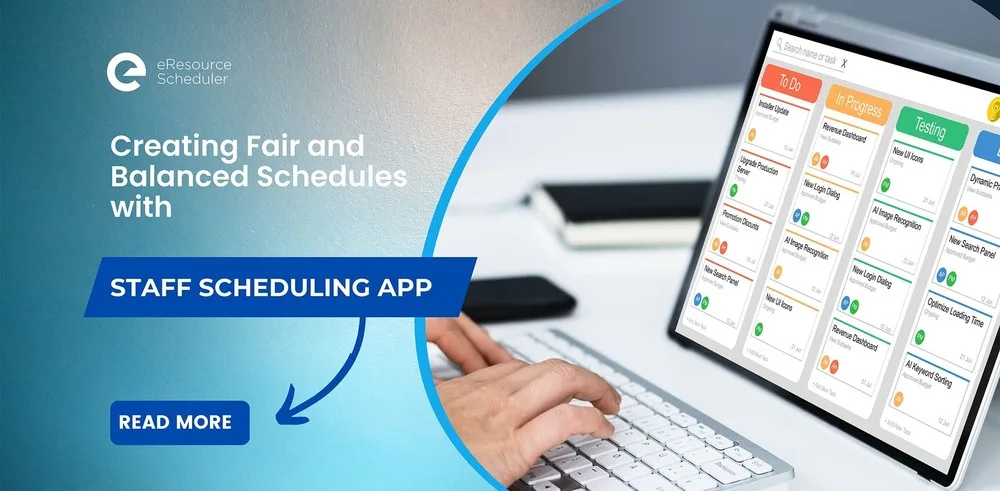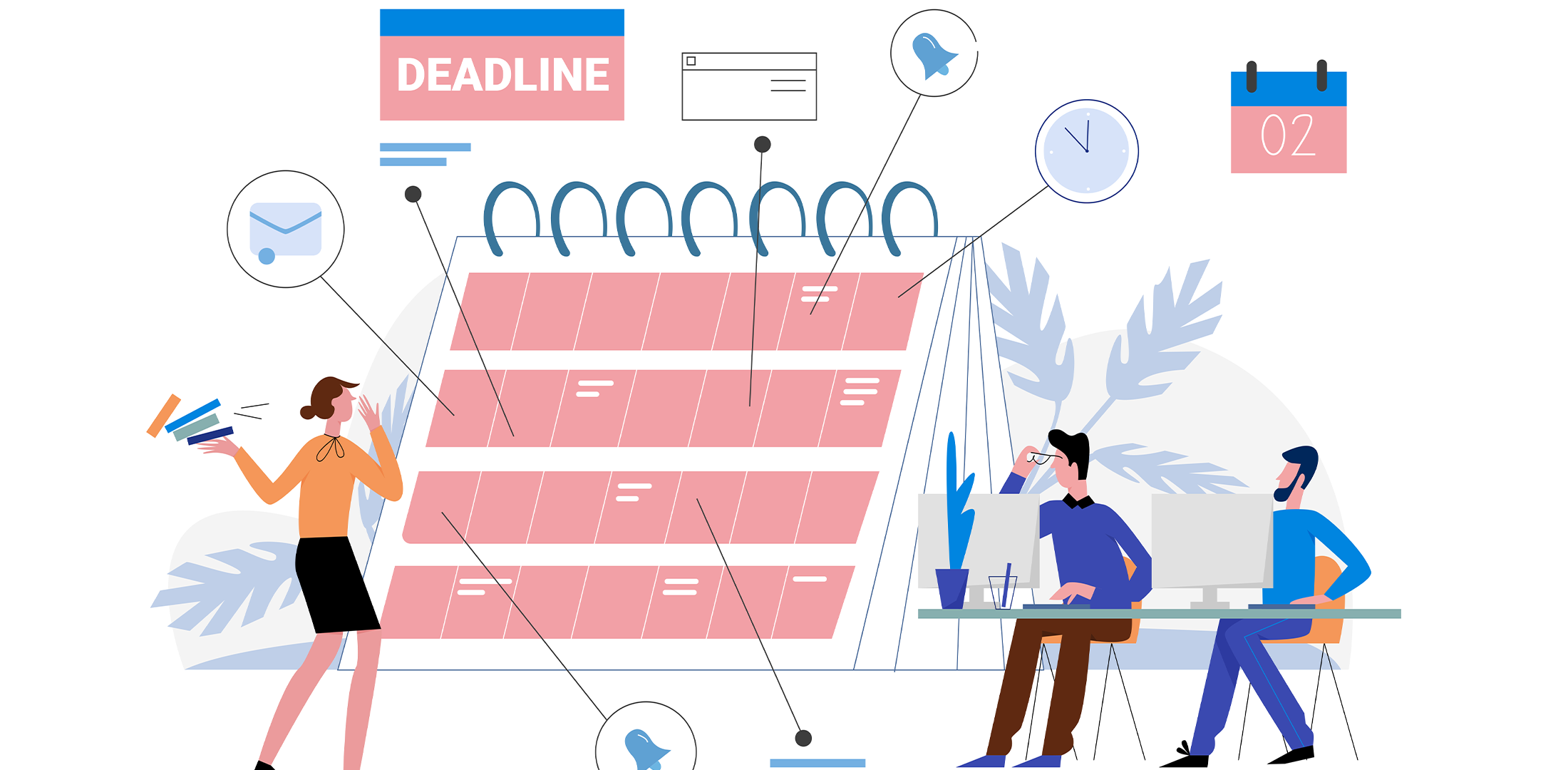
Until recently, project and workforce scheduling for shifts was done manually by managers. They would print out a weekly calendar and then write out which employee would take on a particular shift or assignment. This laborious process often lends itself to scheduling errors, overstaffing, and uneven workload assignments.
Creating a balanced and effective schedule is a complicated and tricky process, but it’s crucial to a project manager’s role. Only if the schedule is balanced will managers be able to gain maximum output from the employees. Uneven assignments or pushing certain employees beyond their work capacity spell disastrous results for all.
Follow our simple steps and tips and be well on your way to creating fair and balanced staff schedules, time and time again.

Work schedule is the amount of hours and days you expect your employees to work. It includes details on:
Work schedules should be organised chronologically and can be created with a staff scheduling software, an Excel sheet, or a calendar.
A fair and balanced work schedule benefits the entire organisation. Let us explain.
With a balanced schedule, resources are worked at optimum capacity and are assigned tasks that directly benefit the bottom revenue lines. Resources are less likely to be stressed and therefore can give their 100% to the job at hand. Employees are also less prone to burnout. Burnout and stress are the top reasons for attrition and poor productivity.
A fair schedule that appropriately aligns employees to assignments that match their skill-set and takes into consideration their working hours and location, maximises their participation and empowers them to deliver unique and improved solutions. How? Employees have a manageable workload, know their deadlines and responsibilities, and therefore have adequate time and tools to deliver.
A work schedule also makes it easier for you, as a manager, to control costs and manage overtime. When you schedule resources in a fair manner, you reduce the risks of overdoing allotment to certain resources which can lead to overtime expenses.
Lastly, a balanced work plan helps you stay on top of the workload so you can meet deadlines better. It also reduces friction between employees that could result from uneven workload assignments.
Not sure how to create a fair and balanced schedule? Don’t worry, we have got your back. Follow our steps.
The first thing you need to know before you can create a balanced schedule is to have a complete list of all tasks and/or shifts that need to be assigned. Once all the tasks are listed, you can prioritise them using the Pareto Principle.
The manager also needs to know the availability of all resources. What are their preferred hours, locations, and whether they have any leaves that could affect the scheduling are all factors you need to have with you. With eRS, an enterprise staff scheduling software, you will gain insight on a resources’ short-term and long-term availability, leave schedule, and applicable holiday list.
It’s important for a manager to create defined work schedule rules. Having rules is the best way to avoid over-time costs and ensure the employees are not working continuously for a certain period. It also ensures that everyone is offered an equal chance to take on assignments of preference. Examples of schedule rules could be:
Next is developing a streamlined protocol for schedule changes, leaves, and unexpected scenarios. Good and fair scheduling has to be flexible. Have a well-communicated plan for employees to be able to modify the schedule and request personal time off. How many times can an employee request a shift change or split a shift? What if there is an emergency? How many sick or personal days can one take? Who will approve the change process? Have a written document that provides guidelines for such scenarios to eliminate conflicts in the long-run.
It is equally important to share the schedule well in advance. No one likes to be pulled into work last minute or be taken away from important family occasions. Informing employees of their schedule makes your employees happier and less stressed as they are able to plan their lives around it. And when the majority of your employees show up as per schedule, you know more work will get done. Another factor to keep in mind here is that certain cities and states have laws that mandate how much notice should be given to an employee with regard to their work schedule.
Lastly, you want to remember that no matter how good a schedule you’ve made, there’s always room for improvement. So, seek feedback from all stakeholders — how is the scheduling process working for them? Would they like to see any changes? Are they feeling it’s balanced?
Another way of creating a balanced schedule is by installing the help of a resource management tool. Using technology to aid your employee planning saves time and its extremely convenient — you don’t need to be a coder to be able to use one.
Here’s what else a staff scheduling software can do for your organisation:
Haven’t invested in a staff scheduling software yet? As we explained earlier, installing the right technology tool will make the task of creating a fair schedule simpler and faster. Most importantly, it will give you additional time. Time where you can focus on more crucial areas of work — like actually being able to support your workforce and deliver timely client solutions.
There are numerous scheduling apps on the market, which one is the best? We’ve done the research and can confidently say that eRS is one of the most comprehensive employee scheduling tools out there.
Whether you are looking to manage full-time, hybrid, or contract employees, or design a shift schedule for a hospital, our software can be plugged and played into any industry and scenario. Try it for yourself, sign up for our free trial, today!
Plan Smarter. Schedule Faster.
Join thousands already using eResource Scheduler to align teams, time, and tasks seamlessly.